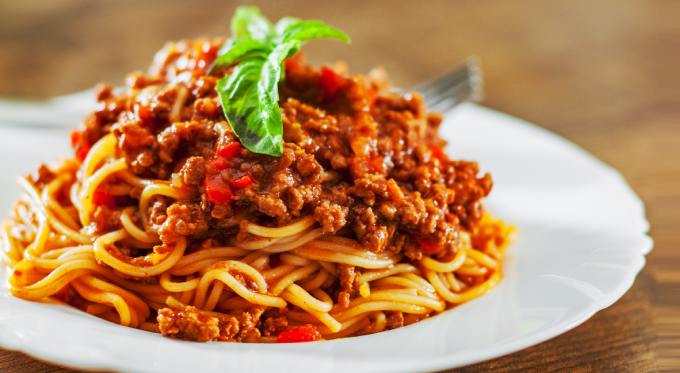Rowing is a sport steeped in British tradition, with the nation’s proud legacy shaped by legends such as Sir Steve Redgrave and Sir Matthew Pinsent. It’s a discipline that combines sheer grit, physical power, and unwavering mental focus – qualities that define not just any athlete, but an Olympian.
When we think of the Olympics, we imagine superhuman effort – athletes pushing themselves to the brink of their limits. But not all sports demand the same kind of strength. Some are tests of skill, others of strategy, and a few, like rowing, are full-blown trials of endurance. In rowing, every stroke is a calculated gamble with pain, where the body is pushed beyond what most would consider bearable. Rowers often push past their physical threshold from start to finish, constantly battling against the rapid build-up of lactic acid.
This lactic acid is no small thing – it’s the burning sensation that signals muscle fatigue, and in rowing, it arrives fast and hard. So it begs the question: why do rowers willingly subject themselves to such intense discomfort? Why compete in a sport where pain isn’t a side effect, but a core feature?
The answer lies in the mental resilience and sheer willpower that rowing demands. It’s in this struggle – stroke after agonising stroke – that true character emerges. And perhaps that’s what makes rowing so compelling.
In this article, we’ll dive into what it really takes to go from an everyday rower to an Olympic powerhouse. What kind of mindset, training, and sacrifice does it demand? Let’s find out.
 Diet is often regarded as one of the most important things to take into consideration when training to become a great athlete, it can affect everything from performance during the race to how you recover after working out. So after the Olympians have trained tirelessly for long periods of time, how do they keep their bodies full of energy and ready for another training session?
Diet is often regarded as one of the most important things to take into consideration when training to become a great athlete, it can affect everything from performance during the race to how you recover after working out. So after the Olympians have trained tirelessly for long periods of time, how do they keep their bodies full of energy and ready for another training session?
Two-time Olympic champion, triple World champion, quintuple World Cup champion and quintuple European champion Helen Glover is a rowing powerhouse. Back in 2013, on the back of her Olympic gold at the London 2012 Olympics, Helen shared what she eats to she keep herself at the top of her game.
6.30 am Cereal and a large glass of orange juice.
7.30 am Carbohydrate gel whilst training.
9.30 am Two slices of toast, and scrambled egg or porridge.
11 am Protein shake after training.
12 pm Egg mayonnaise sandwich and yoghurt. A couple of pieces of fruit and a bit of chocolate.
1.30 pm After an hour’s break, Helen does some weights in the gym while drinking a protein shake.
6 pm Spaghetti bolognese with greens.
Helen’s training plan highlights the importance of fueling long workouts with plenty of protein and complex carbohydrates, and creating a simple yet balanced diet.
Source: Telegraph
Pete Reed's daily routine had many overlaps with Helen's, including the second breakfast. Due to Olympians training constantly they often require a higher food intake, and a second breakfast breaks up training and bridges the gap between the early morning breakfast and lunch. A key difference seems to be that Pete's diet is significantly more substantial than Helen's.
6.15 am Wake up. Shower and stretch.
6.30 am Breakfast. Water, a pint of skimmed milk on Shredded Wheat Bitesize, berries, and a banana.
7.45 am-9.15 am Morning weights workout.
9.35 am Post-training second breakfast. A large bowl of porridge, four scrambled eggs, beans on toast.
11 am-1 pm Rowing at medium intensity, aiming for a heart rate of around 140bpm. Lots of fluid intakes during these long sessions.
1.10 pm Lunch. Large shepherd's pie with fresh veg.
3 pm-4 pm Back out on the water for another hour's rowing.
4.10 pm Post-workout snack. Another bowl of Shreddies and a banana or a Science in Sport energy bar.
7 pm Dinner. Two large steaks, two jacket potatoes, salad, bread and veg.
10 pm Lights out (One more bowl of cereal before bed if still hungry).
Source: Men’s Health
Essentially Olympic rowers have to eat a lot of healthy, complex carbohydrates to fuel them through long workouts. Whilst it may seem like rowers eat a large amount of food, they actually need to stay relatively light to ensure the boat itself doesn’t weigh a great deal. However, Olympic rowers do need to ensure that they have huge power to weight ratio and it has been claimed that with each stroke of an oar, they produce enough energy to power a lightbulb.
.jpg) Diet plays a vital role in an Olympian’s routine, but it’s the relentless training - often starting at dawn and continuing on the lake or in the gym - that truly shapes a champion. Elite rowers build speed and strength through explosive power sessions, core training, and long endurance rows. Over the course of his rowing career, Matthew Pinsent won 10 world championship gold medals, and four consecutive Olympic golds. Read on for insights into what his training routine was like.
Diet plays a vital role in an Olympian’s routine, but it’s the relentless training - often starting at dawn and continuing on the lake or in the gym - that truly shapes a champion. Elite rowers build speed and strength through explosive power sessions, core training, and long endurance rows. Over the course of his rowing career, Matthew Pinsent won 10 world championship gold medals, and four consecutive Olympic golds. Read on for insights into what his training routine was like.
"Two or three times a week, we will spend our second session of the day in the gym. Our gym is specifically set up for rowing, there aren’t too many machines – mostly free weights."
"A pair of dumbells are used to increase a rowers’ power. We will lift heavy weights for five or six reps to increase our power. Sometimes we will have a circuit session of roughly 15 stations, including press-ups and sit-ups. We will go around the circuit three or four times."
"Both strength and endurance routines take about an hour-and-a-quarter, which takes us through to lunch at about 11:15. If we’re hungry enough we will have three courses – maybe soup to start and a pasta main dish. Sometimes, we will eat a dessert if we are pushing the boat out!"
"Three times a week we will have a third session in the day and we will either have another row on the river or be in the gym on the rowing machines. We will probably do about another 45 minutes to an hour and our training day will finish at about 14:00-14:30."
Olympic rowers train relentlessly, sculpting their bodies and minds in pursuit of excellence - and that's precisely what makes them such powerful speakers. They know what it means to commit everything to a goal. For Olympians, “can’t” and “won’t” don’t exist, they redefine boundaries daily, making them truly inspiring voices for any event.
Source: BBC
From legendary gold medallists to world champions, these are some of the greatest British Olympic rowers who have left an indelible mark on the sport.
British rower and Olympic speaker Sir Matthew Pinsent CBE is one of the UK’s most successful athletes ever with no fewer than 14 gold medals – four consecutive Olympic gold medals and 10 World Championship gold medals. If you are seeking the finest Olympic rowing stories, Matthew can give his unique insight into the sport and what it takes to succeed.
Helen Glover is one of Britain's most decorated rowers, with two Olympic golds, three World titles, five World Cup wins, and five European championships to her name, along with multiple British titles across different rowing disciplines. Her exceptional track record, leadership, and inspiring journey make her a compelling and motivating speaker.
Few Olympians have made the transition from athlete to coach as smoothly as Tim Foster MBE. After achieving his goal of winning a gold medal as part of the coxless fours at the Sydney Olympics in 2000, the Olympic speaker retired and transferred straight into coaching with the Great Britain Rowing Team before joining the UK Sport-sponsored Elite Coach Programme in 2004.
Sir Steve Redgrave CBE is the most successful male rower in Olympic history, having claimed five consecutive Olympic gold medals between 1984 and 2000, alongside multiple World and Commonwealth titles. His unwavering dedication, leadership, and ability to inspire excellence make him a compelling and motivating speaker.
If you want to book an Olympic rower for your event, or any one of our many great Olympic athletes, you can contact one of our dedicated booking agents on 0207 1010 553 or fill out our online form.
To discuss the details of your event or book one of our exciting Olympic and Paralympic speakers, call a booking agent at Champions Olympic Speakers on 0207 1010 553 or complete our online contact form.

Position at the company
Lorem ipsum dolor sit amet, consectetur adipiscing elit, sed do eiusmod tempor incididunt ut labore et dolore magna aliqua. Eleifend donec pretium vulputate sapien nec sagittis aliquam. Fringilla ut morbi tincidunt augue. Nibh sit amet commodo nulla facilisi.